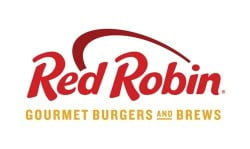Lowe's (NYSE:LOW) surprised everyone by poaching J.C. Penney (NYSE:JCP) CEO Marvin Ellison to lead the home improvement company. Ellison was a steady hand at the department store chain as it sought to back away from the precipice of bankruptcy. But is he the right person to help Lowe's turn around its business?
Lowe's has long played second fiddle to Home Depot, though under the tutelage of retiring CEO Robert Niblock, it positioned itself as an effective alternative to the industry leader.
Being a distant second, however, during a housing boom that allowed the competition to generate more than twice the returns for its shareholders is cold comfort. And Ellison may not be the one to shift that dynamic.

Image source: Lowe's.
Slow and steadyWithout question, J.C. Penney needed a calming influence after the tumultuous stint of former CEO Ron Johnson, whose strategy to drag the old-line retailer into the 21st century nearly wrecked the business. In theory, he may have been right to sever the retailer's reliance on so-called doorbuster sales in favor of everyday low pricing. But that was not what customers wanted, and they fled J.C. Penney in droves, pushing it to the brink.
It was only after interim CEO Mike Ullman had undone virtually all that Johnson implemented that the retailer was able to stop the hemorrhaging and begin to heal itself. Ellison was then brought in to keep Penney heading in the same direction.
And he was largely effective at that. In announcing Ellison's resignation as chairman and CEO, J.C. Penney extolled how he had overseen the retirement of $1.4 billion worth of debt, renewed and enhanced its revolving credit facility, and put the retailer in a significantly better financial position.
Yet it's also true that much of the strategy he oversaw was implemented at Ullman's direction -- Ellison was brought on to assure investors there would be no major changes again, and that's how it has played out. J.C. Penney, despite continuing difficulties not wholly of its own making, is a much better business than it was before Ellison was brought on.
Ready to shake, rattle, and rollThe question is whether that's what Lowe's needs right now. It's a given Ellison knows the home improvement business cold, certainly much more than the soft goods he presided over at J.C. Penney. His 12-year track record at Home Depot as executive vice president of U.S. stores, which made him the senior operations leader for the big-box retailer's 2,000 locations, ensures that he can hit the ground running.
Maybe that's what Lowe's was looking for in its next CEO: someone who can make sure the trains run on time. Niblock has set the stage for Lowe's to pivot toward the professional contractor by making several acquisitions in the maintenance, repair, and operations sector over the past two years, and the company wants someone keeping the business pointed in that direction.
Yet that may not be enough for Lowe's to make any real headway against Home Depot, which isn't exactly standing still. Notwithstanding its first-quarter earnings report, which showed an appreciable slowdown that it credibly blamed on the weather, Home Depot is expected to bounce back sharply this quarter and continue growing throughout the year.
Housing market conditions remain favorable, and it doesn't seem like Home Depot will easily give up market share. And because the industry leader also has a surprisingly strong digital footprint that you wouldn't necessarily expect from a place selling lumber, drywall, and nails, Lowe's has a lot of catching up to do.
Ellison has plenty of expertise cutting costs and increasing employee productivity, but can he push Lowe's to be innovative and nimble in the omnichannel world? I'm not so sure.
 Red Robin (NASDAQ:RRGB) was the target of some unusual options trading on Thursday. Traders bought 2,155 put options on the stock. This represents an increase of approximately 790% compared to the average volume of 242 put options.
Red Robin (NASDAQ:RRGB) was the target of some unusual options trading on Thursday. Traders bought 2,155 put options on the stock. This represents an increase of approximately 790% compared to the average volume of 242 put options.
